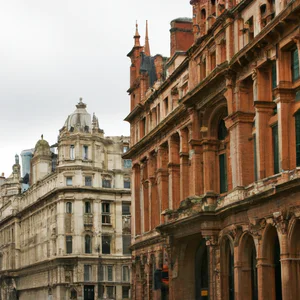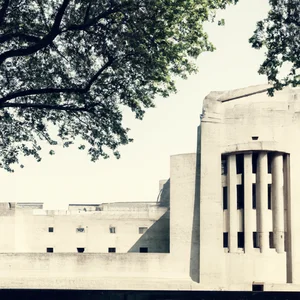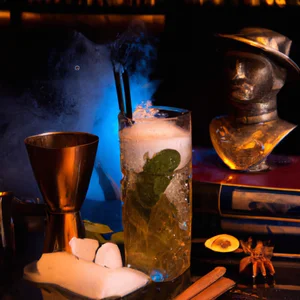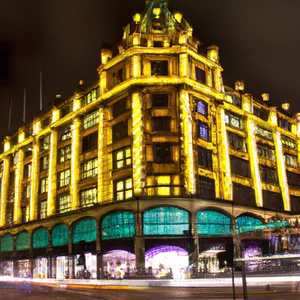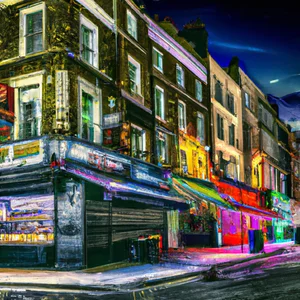Book your experience
Best Tea Rooms London
Hi everyone! Today I want to talk to you about something that reminds me of rain and chatter: Afternoon Tea in London! It’s just one of those traditions that, if you’re in town, you should definitely try. I don’t know about you, but when I think of Afternoon Tea, I immediately imagine those beautiful porcelain cups, the scent of tea mixing with sweets and, obviously, the super British atmosphere.
So, let’s start with the best tea rooms I’ve found around. There are some that are truly unique, like the famous Claridge’s. There, you almost feel like a queen, with waiters in suits serving you. It’s a bit like walking into a movie, you know? And then, it must be said that their scones are truly delicious, so soft that they look like clouds! But be careful, I don’t want to seem too pompous, eh.
Another place that impressed me is Fortnum & Mason. Here, tea is a real art. They have a selection of teas that makes your head spin! And let’s not talk about the sweets, which are so beautiful you don’t even want to touch them. I went there once, and I tell you, it was like being in a fairy tale. Sure, there was a very long line, but in the end it was worth it.
Then, there is also a place that is a little more informal, but which has its own reason: The Orangery in Kensington. It’s a bit like a winter garden, with those soft lights and a relaxed atmosphere. There, you can enjoy a cup of tea overlooking the gardens. It may not be super luxurious, but it has its own charm. And, well, who doesn’t love a little relaxation in the open air, right?
In short, if you decide to take a trip to London, don’t forget to stop for afternoon tea! It’s like savoring a little piece of history, and who knows, maybe you’ll want to make a toast with a biscuit in your hand. I don’t know, but I think it’s an experience that leaves a smile on your face. And if you add a good book or a chat with a friend, well, it’s the best!
Eh, London really has its own way of pampering you, and Afternoon Tea is just one of the many gems it offers. But in the end, everyone has their own preferences, so take a tour and find your favorite place!
Discover the charm of the historic tea rooms
When I first sat down in a historic tea room in London, the afternoon light filtered through the ornate stained glass windows, creating an almost magical atmosphere. The enveloping scent of the infused tea mixed with that of the delicious freshly baked sweets, and in that moment I realized that I was about to live a typically British experience. London’s tearooms aren’t just places to have a cup of tea; they are custodians of British stories, traditions and culture.
A journey through time
Historic tea rooms, such as the famous Fortnum & Mason or the refined Claridge’s, date back centuries, when afternoon tea became a social ritual for the aristocracy. Today, these rooms not only offer an excellent selection of teas, but also an atmosphere that invites reflection on British history and traditions. The elegant decoration, the tables set with finely decorated porcelain and the impeccable service make every visit a real journey back in time.
An insider tip
A little-known tip is to visit Dalloway Terrace, a cozy restaurant located in the heart of Bloomsbury. Here, in addition to the classic afternoon tea, you can enjoy an enchanting garden experience, where climbing plants and colorful flowers create a serene and relaxing atmosphere. This is a great way to enjoy tea outdoors, away from the hustle and bustle of London.
Culture and sustainability
The importance of tea houses goes beyond just drinking tea. These historic places are symbols of conviviality and socialising, helping to keep British traditions alive. Additionally, many teahouses are adopting sustainable practices, such as using organic and local ingredients, to reduce their environmental impact. For example, The Rosebery at Mandarin Oriental is known for its focus on sustainability, offering ethically sourced teas.
Live the experience
If you are planning to experience an authentic afternoon tea, I recommend booking in advance, especially on weekends. Don’t miss the opportunity to savor hot scones with cream and jam, accompanied by a selection of fine teas. Remember to ask the tea room staff to recommend the perfect blend for your palate.
Dissolving the myths
A common misconception is that afternoon tea is only a ritual for special occasions. In fact, it’s a moment of respite that can be enjoyed any day of the week, and many tea rooms welcome even the most casual visitors. It’s not uncommon to see Londoners enjoying afternoon tea after a long day at work.
A final reflection
London, with its historic tea rooms, offers an experience that goes beyond the simple act of drinking tea. I invite readers to consider how a simple cup of tea can encompass centuries of history, tradition and human encounters. What will be your first stop to discover the charm of London’s tea rooms?
The best locations for an exclusive afternoon tea
A personal experience in the heart of London
I still remember the first time I crossed the threshold of the legendary The Ritz London. The air was filled with the delicate scent of tea and freshly baked cakes, and the elegant tea rooms felt like a journey back in time. As I settled into my velor seat, the refined atmosphere enveloped me like a hug, promising an unforgettable experience. Every detail, from the linen napkins to the classical music in the background, contributed to creating an atmosphere of pure magic.
Unmissable locations
If you are looking for the best locations for an exclusive afternoon tea, London offers a variety of options to suit every palate and preference. Here are some of the most renowned:
- Claridge’s: An icon of British hospitality, tea here is served with a touch of glamour. Don’t forget to try their scones, considered among the best in the city.
- The Savoy: Overlooking the River Thames, this historic hotel offers a tea experience that is a true celebration of tradition.
- Sketch: For a more contemporary experience, tea at this artistic restaurant is served in an environment that stimulates creativity with its whimsical artwork.
An insider tip
If you want a truly exclusive experience, book your afternoon tea in one of the private lounges. Many of these places offer private rooms that can accommodate small groups, allowing you to enjoy tea in an even more intimate atmosphere. Don’t forget to ask about special events or seasonal menus; some places offer unique delights at certain times of the year.
The cultural impact of afternoon tea
Afternoon tea is not just a moment of pause, but represents an important British cultural tradition. Introduced in 1840 by the Duchess of Bedford, this ritual quickly gained popularity among the aristocracy and influenced the way Britons socialized. Today, tea is a symbol of conviviality and hospitality, a way to slow down and appreciate life’s little pleasures.
Responsible tourism practices
If you’re environmentally conscious, try to choose locations that use local, sustainable ingredients. Many of London’s best tea rooms are adopting eco-friendly practices, such as the use of organic tea and zero-mile ingredients, thus reducing environmental impact and supporting local producers.
Soak up the atmosphere
Imagine sipping a cup of Darjeeling tea, surrounded by an elegant atmosphere, while a liveried waiter serves you a selection of pastries and sandwiches delicate. The light filtering through the large windows illuminates the finely decorated porcelain, while the sound of clinking cutlery creates a melodious background. It’s a moment to immortalize and share.
An activity not to be missed
For a unique experience, take part in a tea workshop at the London Tea School, where you can learn tea preparation techniques and discover the finest varieties. It’s a fantastic way to deepen your knowledge and become a tea expert.
Myths to dispel
A common misconception is that afternoon tea is a large meal; in reality, it’s more of a light snack. Traditional sandwiches, scones and desserts are meant to be enjoyed in small portions, making the experience more like a culinary excursion rather than a full meal.
Final reflections
After having this experience, I can’t help but wonder: how often do we allow ourselves moments of pure beauty and tranquility in our busy lives? Afternoon tea is not just a tradition, but an invitation to slow down, appreciate and connect with others. We invite you to discover your own piece of tea heaven in London. Which location will you choose for your next afternoon tea?
Savor traditions: typical British tea and sweets
A sweet and fragrant memory
I still remember my first afternoon tea in a charming tea room in London. The air was filled with an enveloping scent of steeping black tea, mixed with the sugary notes of freshly baked pastries. Sitting at a table decorated with intricately decorated porcelain, my gaze fell on a tower of sweets that almost looked like a work of art. Each bite of a warm scone, spread with butter and jam, transported me on a journey through British history and culture.
Tea and sweets: an inseparable combination
Afternoon tea, born in the 19th century to combat the afternoon hunger of the aristocracy, has become a social ritual. The tradition includes a selection of teas, generally an Earl Grey or a Darjeeling, accompanied by a variety of typical sweets. The scones, soft and buttery, are a must, served with cream and jam. Let’s not forget the finger sandwiches, filled with cucumber or smoked salmon, which add a savory touch to this sweet feast.
For an authentic experience, I recommend you visit the historic Claridge’s, where every detail is taken care of with passion. Here, tea is served with timeless elegance and attention to tradition.
An insider tip
If you want to surprise your guests, try asking for pu-erh tea. This often overlooked fermented tea offers an earthy, complex flavor that pairs beautifully with desserts. It is not common in tea rooms, but its unique profile will conquer even the most demanding palates.
A cultural heritage
Afternoon tea is not just a moment of pleasure, but an important cultural expression. During the reign of Queen Victoria, it became a symbol of elegance and sociability, a way for women to socialize in an era when public interactions were limited. Today, it continues to represent a link between past and present, a ritual that celebrates conviviality and tradition.
Sustainability and responsible choices
Many venues are embracing sustainable practices, using local and organic ingredients. For example, The Ivy recently introduced a selection of responsibly grown teas, allowing visitors to enjoy tea without compromising the environment.
An experience not to be missed
To fully immerse yourself in this tradition, I recommend taking part in a tea making workshop. Here, you will not only learn techniques for making the perfect tea, but you will also have the opportunity to savor unique tea and dessert pairings.
Clearing up the myths
One of the most common myths is that afternoon tea is reserved only for high society. In reality, it is an experience accessible to all. Many venues offer reasonably priced options, making this tradition a real treat for any visitor.
Personal reflection
As you sip tea, I invite you to reflect on how a simple ritual can bring people together and preserve history. What’s your favorite dessert to pair with a cup of tea? Discovering the culinary traditions of a country can prove to be an exciting journey full of surprises.
An unconventional experience: tea in the garden
An unforgettable memory
I still remember the first time I sipped tea in the garden of an ancient villa in London. It was a sunny afternoon, the rays filtered through the branches of the centuries-old trees, creating a play of light and shadow that made the atmosphere almost magical. In that moment, while savoring a delicate Earl Gray accompanied by freshly baked scones, I understood that tea in the garden is much more than a simple meal: it is a ritual that awakens the senses and invites contemplation.
Where to live this experience
For those who want to immerse themselves in this unique experience, the Kensington Roof Gardens is an unsurpassed choice. Located on the seventh floor of a building in the heart of Kensington, this garden offers panoramic views of the city and a selection of fine teas, served in a charming setting. Another gem is Syon Park, where tea is served in an Italian garden, surrounded by fragrant flowers and fountains.
An insider tip
A little-known secret is that many historic gardens, such as Chiswick House, offer afternoon tea events during the summer months. These events often include live concerts and children’s activities, making them a perfect choice for families and friends. Be sure to book in advance, as places can fill up quickly!
The cultural impact
Tea in the garden is not just a gastronomic pleasure; it is a reflection of the British tradition that celebrates contact with nature. Since the time of afternoon tea, introduced by the Duchess of Bedford in the 19th century, gardens have been places of socialisation, reflection and beauty. These locations continue to preserve a unique cultural heritage, uniting people through the love of tea and nature.
Sustainability and responsibility
Many gardens in London are committed to sustainable tourism practices. For example, the Royal Botanic Gardens at Kew not only offers tea in the garden, but also promotes the cultivation of local plants and the use of organic ingredients in their menus. Choosing to visit these places also means supporting biodiversity and the preservation of the environment.
An immersion in the senses
Imagine sitting in the shade of a centuries-old tree, while the scent of hot tea mixes with the fragrance of flowers. The sounds of nature, together with the chatter of other guests, create an intimate and welcoming atmosphere, perfect for a break from the frenetic pace of urban life. Every sip of tea becomes an invitation to slow down and enjoy the present moment.
An activity not to be missed
During your visit, don’t miss the opportunity to attend a gardening workshop often held in historic gardens. Learning how to grow herbs used in teas can add a personal touch to your experience and give you new skills to take home.
Myths to dispel
A common misconception is that garden tea is only for special occasions or must follow strict rules. In reality, these experiences are open to everyone and the atmosphere is often relaxed and informal. Don’t be afraid to bring a book with you or chat with other guests: the garden is, by definition, a place for meeting and sharing.
Final reflection
In an ever-increasing world digitalized, tea in the garden represents a return to simplicity and connection with nature. I invite you to reflect on how a moment of pause with a cup of tea can influence your mood and well-being. Have you ever tried sipping tea immersed in the beauty of a garden? It might surprise you how rejuvenating it can be.
The art of tea: how to choose the perfect blend
An unforgettable meeting with tea
The first time I crossed the threshold of a welcoming tea room in the heart of London, I was immediately enveloped by the aroma of fine tea and sweet pastry notes. As I settled into a table next to a window overlooking a bustling street, the owner, an elderly lady with an infectious smile, began telling me the history of each blend, as if they were ancient legends. That meeting was not just a simple moment of relaxation, but a real sensorial journey, an art that requires dedication and passion.
Choose the right mixture
When it comes to choosing the perfect blend, the options are practically endless. From classic black teas like Darjeeling and Earl Grey, to delicate Japanese green teas like Sencha, each variety has its own unique character. For those looking for an authentic experience, I recommend trying the house tea, often prepared with fresh, local ingredients. Many tea rooms in London, such as the famous Fortnum & Mason, offer a wide selection of teas, accompanied by detailed information on their origins and preparation techniques.
An insider tip
Here’s a secret that only true tea lovers know: not all teas are suitable for all occasions. If you’re hosting an afternoon tea, for example, opt for a robust black tea that can balance the sweetness of the pastries. A light green tea might be delicious, but risks being overwhelmed by the more intense flavors of desserts. Also, don’t forget to ask your waiter which tea goes best with the savory dishes you’re about to enjoy!
Cultural and historical impact
Tea has a deep connection with British culture, not only as a drink, but as a symbol of conviviality and sociability. The tradition of afternoon tea, born in the 19th century, has transformed the way English people gather. This ritual is not just a moment of pause, but an opportunity to share stories and bond, reflecting the country’s rich social history.
Sustainability in the world of tea
In recent years, the tea world has seen an increase in attention towards sustainable practices. Many producers and tea rooms are adopting organic growing and fair trade methods, ensuring that every cup of tea is not only delicious, but also responsible. Choosing teas from sustainable sources is one way to contribute to a better future while enjoying this traditional beverage.
Immerse yourself in the atmosphere
Imagine sipping a cup of tea as the sun streams through the windows and the scent of freshly baked pastries fills the air. Each sip is a warm hug that invites you to slow down and take a moment to reflect. The best tea rooms in London offer not only a selection of teas, but also an atmosphere that allows you to savor the art of tea in all its fullness.
Activities to try
For an unforgettable experience, I recommend taking part in a tea masterclass in one of the many tea rooms in London. These sessions will guide you through the tea selection and preparation process, giving you the opportunity to discover the secrets of the blends and learn from the best experts in the industry.
Myths and misconceptions
One of the most common myths is that tea should always be served at a high temperature. In reality, different varieties of tea require different temperatures to best express their flavors. For example, green and white teas are better at lower temperatures, while black teas can be enjoyed warmer.
Final reflection
What type of tea blend represents you best? We invite you to explore the different options and discover which tea tells your personal story. With such a vast world of flavors and aromas, the art of tea is a never-ending journey, ready to surprise you with every sip.
Time travel: the history of afternoon tea
I clearly remember the first time I savored the atmosphere of an authentic London tea room. It was a rainy April afternoon, and as the wind blew through the crowded streets, I took refuge in one of Covent Garden’s historic tea rooms. The air was filled with the enveloping scents of black tea and fresh pastries. Here, in this corner of tranquility, I began to discover the roots of a tradition that has spanned the centuries, taking me back in time.
The origins of afternoon tea
Afternoon tea, one of the most famous British traditions, has its roots in the 19th century, when Anna Maria Russell, the 7th Duchess of Bedford, began feeling hungry in the afternoon. To ease her hunger, she began inviting friends to share tea and light desserts. This practice quickly spread among high society, becoming an important social ritual. Today, it is a symbol of British culture, celebrated in elegant tea rooms and luxury hotels across London.
An insider tip
If you want an authentic and less touristy experience, try visiting the Baker Street Tea Rooms, a hidden gem. Here, the family that runs the place has kept traditional dessert recipes alive for generations. Don’t forget to ask for clotted cream, a local specialty that will enrich your scone in a completely unique way.
The cultural impact
Afternoon tea is not just about tea and sweets; it is a reflection of society and its evolutions. During the Victorian period, the ritual evolved into an event of great elegance, with formal dress and refined conversation. This gesture of conviviality also paved the way for greater inclusiveness, allowing women and men to socialize in a less formal context than lunches.
Sustainability and tea
In an age where sustainability is key, many teahouses are adopting responsible practices. Some venues, such as Tearoom at the V&A, offer organic teas and cakes made with local, seasonal ingredients, reducing the environmental impact. Choosing to enjoy tea from sustainable cultivation not only enriches the experience, but also contributes to a better future for our planet.
An experience not to be missed
If your trip to London coincides with the spring season, don’t miss the opportunity to attend an afternoon tea in the gardens of Kensington Palace. The sight of the flowers in full bloom, accompanied by a selection of fine teas and sweets, will make your afternoon unforgettable.
Myths to dispel
It is common to think that afternoon tea is a luxury reserved only for tourists. In fact, the English consume it regularly, and there is nothing more rewarding than an afternoon dedicated to this ritual. Remember, however, that afternoon tea is not just about tea: it is a social experience that invites conversation and sharing.
As I reflect on this tradition, I wonder: what personal story might you discover while sipping a cup of tea in one of London’s many wonderful corners? Next time you find yourself in a tea room, let yourself be transported by the past and live in the moment like a true Londoner.
Sustainability and tea: responsible choices in London
An epiphany among the tea leaves
Imagine finding yourself in one of London’s historic tea rooms, surrounded by an atmosphere that smells of elegance and tradition. While you savor one organic tea blend, a thought crosses your mind: this is everything tea represents, not only a moment of pleasure, but also a conscious choice. During my latest visit to London, I had the opportunity to meet a tea expert who revealed to me how the industry is evolving towards more sustainable practices. This discovery transformed my way of experiencing the tea ritual, making it not only a moment of relaxation, but also a gesture of responsibility.
The green revolution of tea rooms
In recent years, many London tea rooms and restaurants have adopted sustainable practices. According to an article in the Guardian, 60% of tearooms in London now use organically grown, fair trade tea. It’s a significant change, which not only supports local producers, but also helps reduce environmental impact. Opting for organic tea is not just a choice of taste, but a way to support responsible agricultural practices.
An insider tip
If you want a truly authentic and sustainable experience, I recommend visiting the Tea Room at The Savoy, where every cup of tea tells a story of care and attention. Here, you will not only have the opportunity to taste rare blends, but you can also participate in events that promote environmental awareness. A little-known tip? Ask to try their Himalayan tea blends, which are biodynamically grown and have a unique flavor.
Tea as a symbol of responsibility
Tea has traditionally always been a symbol of conviviality and relaxation in British culture. However, today it is taking on a new meaning: that of a conscious choice. Responsible agricultural practices, the use of recyclable materials and the promotion of local producers are turning tea into an ambassador of sustainability. Every sip thus becomes a step towards a better future.
An initiative not to be missed
I invite you to participate in London Tea Week, an annual event celebrating tea and its sustainable practices. During this week, numerous tearooms offer free tastings, workshops and seminars on how to choose sustainable teas. It’s an excellent opportunity to immerse yourself in tea culture and discover how each of our choices can make a difference.
Myths and reality
A common misconception is that sustainable tea is more expensive than conventional options. In fact, many local producers offer high quality tea at competitive prices, making it accessible to everyone to make more responsible choices. Informing yourself and choosing consciously is the key to dispelling this myth.
A final reflection
As you sip your tea, I invite you to consider: every cup can be a gesture of love towards the planet. How can we, each of us, contribute to making the world a better place through small daily choices? Next time you enjoy afternoon tea, remember that your choice can have an impact.
Tea and culture: events and festivals not to be missed
Imagine walking through the cobbled streets of London, when the enveloping scent of fresh tea draws you to a historic tea room. It is here that I experienced one of the most memorable moments of my trip: an event dedicated to afternoon tea, which not only delighted my palate, but also opened a window onto British culture. During the event, I was able to meet tea experts and renowned chefs, learning not only to taste, but also to understand the history and traditions surrounding this fascinating practice.
Unmissable events
In London, several events celebrate tea and its relevance in British culture. Among the best-known events, the London Tea Festival, held every year in Brick Lane, is a must for any tea lover. Here, you can discover a wide range of tea varieties, participate in workshops and, of course, savor some of the best blends from around the world. Another event not to be missed is Tea & Tattle, which offers a series of thematic meetings and tastings dedicated to the art of tea.
An insider tip
A well-kept secret among enthusiasts is “Tea on the Thames”, a unique experience that combines a cruise along the Thames with a delicious afternoon tea on board. This activity not only allows you to savor sweet and savory delicacies, but also enjoy breathtaking views of London’s iconic landmarks, making every sip even more special. Book early, as places tend to fill up quickly!
The cultural impact of tea
Tea is not just a drink; it is a symbol of conviviality and sociability in the United Kingdom. The tradition of afternoon tea dates back to the early 19th century and has profoundly influenced social interactions and daily rituals. Today, events and festivals celebrate not only tea, but also the cultural legacy it brings with it, uniting people of all ages and backgrounds.
Sustainability in the world of tea
Many tea events in London are committed to promoting sustainable practices. Several companies participating in the London Tea Festival, for example, focus on organic and responsibly sourced teas, helping to preserve the environment and support producing communities. Choosing to participate in these events not only enriches your experience, but also supports responsible tourism.
An experience worth trying
After exploring the events, don’t forget to visit one of London’s historic tea rooms, such as the famous Fortnum & Mason, where you can fully immerse yourself in the British tradition of afternoon tea. Their elegant rooms and impeccable service will make you feel like true 19th century nobles.
Myths and misconceptions
A common misconception is that afternoon tea is only for special occasions. In fact, many tea rooms in London offer casual and accessible experiences, making this tradition a perfect option for any time of day. Don’t be afraid to include tea in your itinerary, whether it’s a break after shopping or a casual meeting with friends.
In conclusion, the world of tea in London is a journey that goes beyond simply sipping a drink. What is your favorite tea event? Have you ever attended a tea festival? Immerse yourself in this experience and let each sip tell you the story of a rich and fascinating culture.
A local touch: the best hidden tea rooms
I vividly remember the afternoon when, after a long walk through the crowded streets of London, I came across a small tea room hidden in a quiet street. It wasn’t marked in the tourist guides, but the scent of fresh tea and freshly baked pastries irresistibly attracted me. Upon entering, I was greeted by an intimate and welcoming atmosphere, with walls covered in black and white photographs and vintage furniture that told stories of a bygone time. This is the true charm of London’s historic tea rooms: a corner of tranquility in a busy metropolis.
A hidden treasure
One of my favorite places is Tea and Tattle, located right behind the British Museum. This tea room is a little-known gem where tea lovers can enjoy a selection of blends from around the world, accompanied by typical British desserts. Their carrot cake is an experience not to be missed! And if you’re looking for a secret tip, don’t forget to ask about their “secret blend”, a special blend that changes every month and that only regulars know about.
The history and culture of tea in London
Afternoon tea has deep roots in British culture, dating back to the 19th century, when noblewomen such as Anna Maria Russell, Duchess of Bedford, began inviting friends to share tea and cakes in the afternoon. This ritual has become a symbol of conviviality and elegance. However, in addition to the most famous places, there are many tea rooms that offer an authentic experience, far from mass tourism.
Sustainability and responsible practices
Many of these hidden tea rooms are also committed to sustainability, using local and organic ingredients. For example, The Tea Room in Hampstead offers a menu that includes fresh, seasonal produce, promoting a responsible approach to consumption.
Immerse yourself in the atmosphere
Imagine sitting at a table, surrounded by finely decorated porcelain plates, while sipping a fragrant Earl Gray and savoring a warm scone with cream and jam. The atmosphere is that of a welcoming living room, where conversations flow freely and time seems to slow down. It’s a time to unplug and enjoy the sweetness of life, just as the characters in Jane Austen’s novels would have done.
An unmissable activity
If you want a unique experience, try booking a “tea tasting” at a local tea room and learn about the different varieties of tea and their origins. This is a great way to deepen your knowledge of tea and appreciate the nuances of flavor that each blend offers.
Myths to dispel
A common misconception is that afternoon tea must necessarily be a formal and expensive event. In fact, there are many tea rooms that offer more casual and accessible options, without compromising on quality. It is not uncommon to find places where tea is served in a relaxed and friendly atmosphere, making the experience even more authentic.
A final reflection
So, next time you’re in London, don’t limit yourself to the well-known places. Discover the hidden treasures the city has to offer. We invite you to reflect: what story could your next afternoon tea tell? Ultimately, every sip is a journey through time, an invitation to let yourself be carried away by the magic of a centuries-old tradition.
Tea as a symbol of British conviviality
An unforgettable meeting
I still remember my first afternoon tea experience in a charming tea room in London. Soft light filtered through the large windows, while the enveloping aroma of freshly brewed tea mixed with that of freshly baked pastries. Sitting with longtime friends, the simple act of sharing a cup of tea became a moment of authentic connection. In that brief interval, I understood how tea was much more than a drink: it was a ritual, a symbol of British conviviality.
A ritual that transcends time
Tea in the UK is serious business. It’s not just about drinking a hot drink; it is a time dedicated to socializing, reflection and celebrating relationships. According to the Tea and Infusions Association, tea is such an integrated part of British life that over 60% of adults consume tea daily. In this context, tea becomes a universal language of hospitality and friendship.
An insider’s secret
If you want to fully enjoy this experience, I recommend you look for the “thematic teas”. Some tea rooms offer special events, such as “Mystery Tea,” where you can enjoy delicious desserts while solving a puzzle. This approach not only makes the experience more engaging, but also offers a unique way to bond with other participants.
Cultural and historical impact
Tea has a long history in the United Kingdom, dating back to the 17th century, when it became a symbol of status and sophistication. Despite its aristocratic origins, tea today is accessible to all and has profoundly influenced British culture. For example, the tradition of afternoon tea was introduced by the Duchess of Bedford and has evolved into a ritual that everyone from barons to tourists can enjoy.
Sustainability in the world of tea
With growing awareness around sustainability, many tea rooms in London are changing their practices. From environmentally friendly suppliers to organic teas, there is a movement towards more responsible choices. Discovering a tea room that is committed to fair trade not only enriches your experience but also supports ethical practices.
An experience not to be missed
If you want an authentic tea experience, I recommend visiting Fortnum & Mason, where the afternoon tea service is a real ritual. Book in advance and let yourself be pampered by a selection of fine teas and delicious desserts in an environment that exudes elegance.
Myths to dispel
It is often thought that tea should only be served on formal occasions, but this is a common misconception. In fact, tea can be enjoyed at any time of the day. A simple meeting between friends can turn into a special moment simply by adding a pot of tea and some sweets.
Final reflection
Next time you sit down to enjoy a cup of tea, ask yourself: What story lies behind this drink? Consider the rich tradition it represents and the importance of conviviality it brings with it. We invite you to explore this culture and discover the connections that tea can create, not only with others, but also with yourself.

 Architecture and Design
Architecture and Design Cities and Regions
Cities and Regions Culture and History
Culture and History Events and Festivals
Events and Festivals Fashion and Shopping
Fashion and Shopping Food and Wine
Food and Wine Nature and Adventure
Nature and Adventure Unique Experiences
Unique Experiences



















